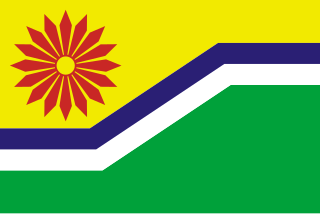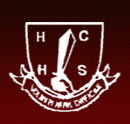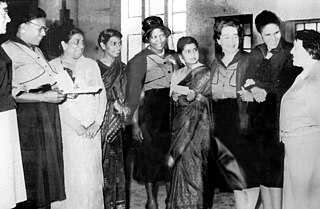
Mpumalanga is a province of South Africa. The name means "East", or literally "The Place Where the Sun Rises" in the Nguni languages. Mpumalanga lies in eastern South Africa, bordering Eswatini and Mozambique. It shares borders with the South African provinces of Limpopo to the north, Gauteng to the west, the Free State to the southwest, and KwaZulu-Natal to the south. The capital is Mbombela.

The Congress of South African Trade Unions is a trade union federation in South Africa. It was founded in 1985 and is the largest of the country's three main trade union federations, with 21 affiliated trade unions.

Helen Beatrice Joseph OMSG was a South African anti-apartheid activist. Born in Sussex, England, Helen graduated with a degree in English from the University of London in 1927 and then departed for India, where she taught for three years at Mahbubia School for girls in Hyderabad. In about 1930 she left India for England via South Africa. However, she settled in Durban, where she met and married a dentist, Billie Joseph, whom she later divorced.

District Six is a former inner-city residential area in Cape Town, South Africa. In 1966, the apartheid government announced that the area would be razed and rebuilt as a "whites only" neighbourhood under the Group Areas Act. Over the course of a decade, over 60,000 of its inhabitants were forcibly removed and in 1970 the area was renamed Zonnebloem, a name that makes reference to an 18th century colonial farm. At the time of the proclamation, 56% of the district’s property was White-owned, 26% Coloured-owned and 18% Indian-owned. Most of the residents were Cape Coloureds and they were resettled in the Cape Flats. The vision of a new white neighbourhood was not realised and the land has mostly remained barren and unoccupied. The original area of District Six is now partly divided between the suburbs of Walmer Estate, Zonnebloem, and Lower Vrede, while the rest is generally undeveloped land.

David Webster was an academic and anti-apartheid activist. He worked as an anthropologist at the University of the Witwatersrand, where he was a senior lecturer at the time of his assassination.
The National Union of South African Students (NUSAS) was an important force for liberalism and later radicalism in South African student anti-apartheid politics. Its mottos included non-racialism and non-sexism.

Indian South Africans are South Africans who descend from indentured labourers and free migrants who arrived from British India during the late 1800s and early 1900s. The majority live in and around the city of Durban, making it one of the largest ethnically Indian-populated cities outside of India.

Barry Streek was a liberal South African political journalist and anti-apartheid activist.

The Federation of South African Trade Unions (FOSATU) was a trade union federation in South Africa.

Internal resistance to apartheid in South Africa originated from several independent sectors of South African society and took forms ranging from social movements and passive resistance to guerrilla warfare. Mass action against the ruling National Party (NP) government, coupled with South Africa's growing international isolation and economic sanctions, were instrumental in leading to negotiations to end apartheid, which began formally in 1990 and ended with South Africa's first multiracial elections under a universal franchise in 1994.
Louis Marius Schoon was a white anti-apartheid activist of Afrikaner descent. Marius died from lung cancer, after a long call from Nelson Mandela, thanking him for his sacrifice against the struggle.

The David Webster House is at 13 Eleanor Street in Troyeville and it is important not only because this is where the anti-apartheid activist David Webster lived but it is also where he was killed by a government assassin. The house is still in private ownership but it is decorated to commemorate his life.

Harold Cressy High School is a secondary school in District Six of Cape Town in South Africa. It was founded in January 1951 as the Cape Town Secondary School. The school has played a substantial role in South African history during the apartheid period and the building is identified as an important landmark.

The Federation of South African Women (FEDSAW) was a political lobby group formed in 1954. At FEDSAW's inaugural conference, a Women's Charter was adopted. Its founding was spear-headed by Lillian Ngoyi.
The Beer Hall Boycott of South Africa was a nationwide, women-led campaign of boycotting and demonstrating against municipal beer halls stretching from roughly the 1920s to the 1960s. The Native Beer Act of 1908 had made it illegal for South African women to brew traditional beer. Police raided homes and destroyed home-brewed liquor so that men would use municipal beerhalls. In response, women attacked the beerhalls and destroyed equipment and buildings.
The Mayibuye Uprising was a sequence of protests and demonstrations, led by the African National Congress, South African Indian Congress and the African People's Organisation that took place around No.2 Location Galeshewe, in Kimberley, on 7–8 November 1952. The uprising was not an isolated event, but part of the Defiance Campaign which started in June 1952. The aim of the campaign was to peacefully defy the laws of the apartheid government across the country.
Christina 'Chrissie' Jasson was a South African clerk and trade unionist from Port Elizabeth, who stood accused of treason at the Rivonia Trial.
Florence Matomela OLG (1910–1969) was a South African anti-pass law activist, communist, civil rights campaigner, ANC veteran, teacher and mother who dedicated her life to fighting against Apartheid laws in South Africa. Matomela was the provincial organiser of the African National Congress Women's League (ANCWL) and vice-president of the Federation of South African Women (FEDSAW) in the mid 1950s.
The Workers' Library and Museum was a non-profit labour service organisation (LSO) active in Johannesburg, South Africa between 1987 and the early 2000s. The organisation provided a meeting and learning centre for labour activists as well as students from the nearby Alexandra and Soweto areas. In 1994, it was expanded into the Workers and Museum in Newtown, Johannesburg, with the only museum in South Africa focussed on working people other than the Slave Lodge, Cape Town.














